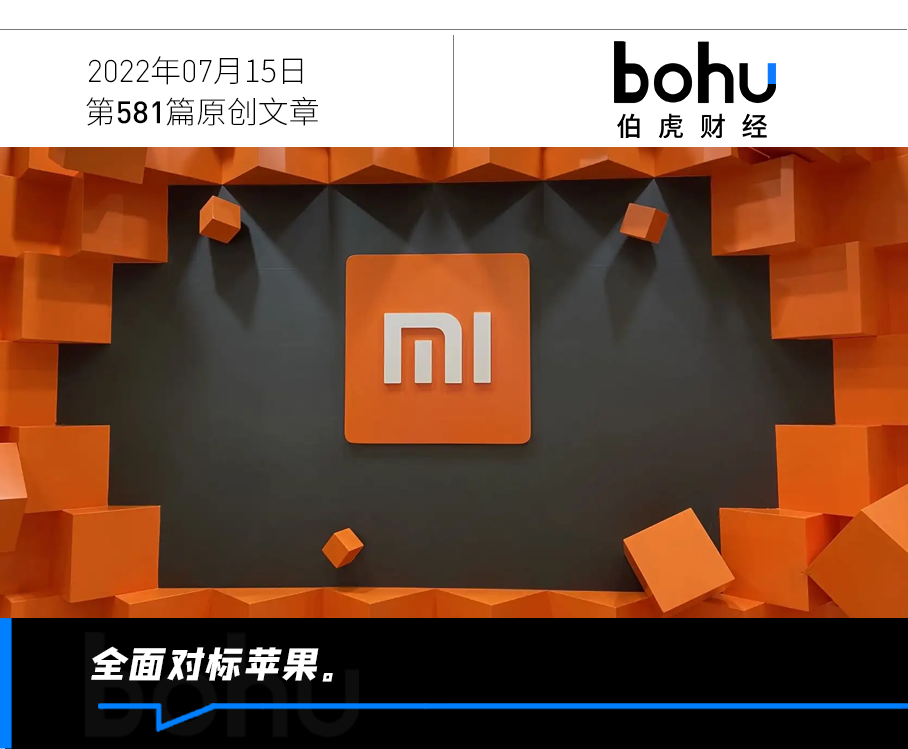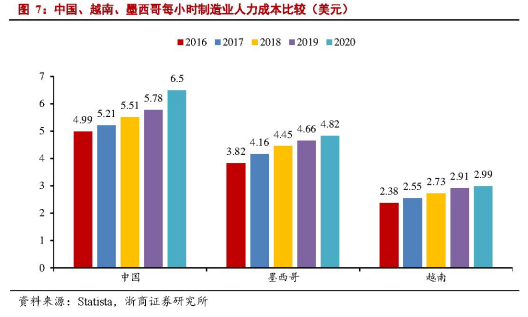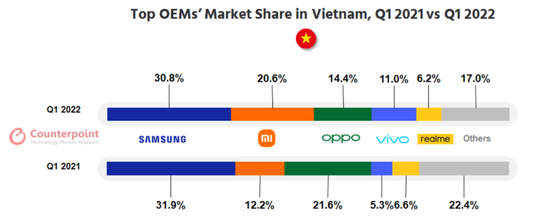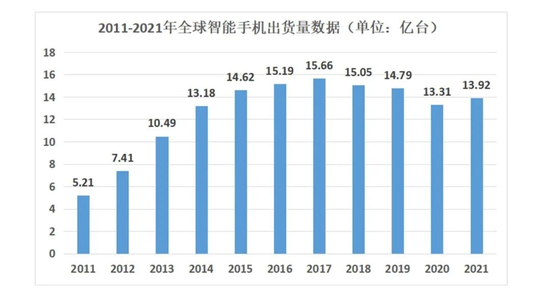
Welcome to the WeChat subscription number of “Sina Technology”: techsina
Text / Li Xia
Source: Bohu Finance (ID:bohuFN)
In May of this year, the Vietnamese Prime Minister visited the United States and found Apple CEO Cook in the middle, and asked him to include more Vietnamese companies in Apple’s supply chain. Cook said Apple is interested in partnering with Vietnamese manufacturers that meet the company’s standards.
According to public information, Vietnam now has 160,000 people in 31 companies producing iPhones, AirPods, iPads, MacBooks and other devices for Apple.
Two months later, Rebs, who had not been seen in public for a long time because he was busy building a car, took the time to personally release the flagship phone Xiaomi Mi 12S. The price was high, but he was very sincere. Not only did it get the Snapdragon 8+ chip of TSMC’s 4nm process, but also a new partner Leica.
It has been a year since last year’s full-scale benchmarking with Apple. On this day, in order to remind employees not to forget their original intentions, Rebst deliberately shouted a new slogan at the press conference, “Being benchmarked with iPhone is not a slogan within Xiaomi.”
Then, on the second day of the conference, there were media reports that Xiaomi was going to build a 200,000-square-meter base in Vietnam to produce mobile phones, with an investment of 80 million US dollars. Xiaomi quickly confirmed the news, only to add that Vietnam is only the company’s product layout in Southeast Asia, not the entire production chain has been relocated to Vietnam.
It seems that Xiaomi’s benchmarking against Apple is not only not a slogan, but has already called the bet on the supply chain.
Benchmarking, we need to do a full set
Although it is to go to Vietnam to produce mobile phones, it is not Xiaomi who ends up in person, but an electronics manufacturing company called Guanghong Technology (DBG).
According to the official website, the company was established in Huizhou, Guangdong in 1995. At the beginning, it mainly produced electronic components. It was listed on the Shenzhen Stock Exchange in 2017. It currently has production bases in Jiaxing and India, and a logistics center in Hong Kong. A relevant person said that Xiaomi is mainly operated by DBG in Hong Kong.
Xiaomi said that in recent years, due to the increase in import and export logistics costs due to the epidemic, the company’s shipping costs in the Southeast Asian market have risen. “Xiaomi and partners are working together to implement local production in line with the strategy of reducing circulation costs and improving supply efficiency.”
And Xiaomi came to Vietnam not only to produce smartphones, but also some data transmission equipment, circuit boards and other components.
At this point, smart readers will ask, why Vietnam?
Then please open the world map, you can see that the northern part of Vietnam not only borders China’s Guangxi and Yunnan, but the eastern part is tightly surrounded by the South China Sea to form a long and narrow “S” coastline. Such conditions, not engaging in foreign trade, is a veritable violation of the name. Ancestor’s decision.
According to “Vietnam Economy”, in the first quarter of 2022, Vietnam’s total import and export of goods was US$176.35 billion, a year-on-year increase of 14.37%. China, the world’s largest trading country, increased by 10.7% over the same period.
Strategic location is only one aspect, the most important thing that can attract people in the past is people.

By the end of 2021, Vietnam’s population will reach 98.2 million, with an average age of 32.9 years. According to the research report of Zheshang Securities, the labor cost of Vietnam’s manufacturing industry in 2020 is 2.99 US dollars per hour, which is less than half of China’s.
In recent years, China has entered a stage of high-quality development from the past high-speed growth. Many companies have begun to take overseas as a new growth line. Vietnam, which is young and has low labor costs, naturally shows its vitality, thus becoming a hot spot for domestic investment.
An example is real estate. As a weather vane of the urban economy, in April this year, the rare Li Ka-shing and his real estate company Cheung Kong Group appeared in Ho Chi Minh City, Vietnam, to discuss investment in real estate with the local mayor.
Going back to mobile phones, as Rebs’ benchmark Apple, Tianfeng International analyst Ming-Chi Kuo said on social platforms a few months ago that AirPods Pro 2 will begin mass production in Vietnam in the second half of 2022. There were also media reports this year that Apple was discussing moving iPad production from China to Vietnam.
Since the last decade, Goertek, Luxshare, Yutong Technology, Lens Technology, Lingyi Zhizao, Meiyingsen, Bourne Optical and other “fruit chain” companies have successively set up factories in Vietnam. Foxconn is said to be planning to invest $700 million in Vietnam to build an assembly plant for Apple, an old customer. Since Xiaomi wants to benchmark, it must choose to make a full set.
In addition, as Xiaomi’s number one rival in globalization, especially Samsung, the biggest rival in these developing countries, it entered Vietnam in 2009. After closing the last mobile phone factory in China, the Huizhou factory in Guangdong in 2019, Vietnam is used as a production facility. The powerhouse is now responsible for nearly half of Samsung’s global smartphone production capacity.
Combining the above factors, Xiaomi’s entry into Vietnam is an inevitable choice.
Supply Chain Transfer in a Big Environment
This is not the first time Xiaomi has gone out to build a factory. In February of this year, after the leaders of China and Argentina met, there were media reports that Xiaomi was going to build a factory in Tierra del Fuego at the southern tip of Argentina – specifically, “Lei Jun released a 100 billion big move, Xiaomi sneaked to the southern hemisphere to build a factory”.
The first place Xiaomi set up factories abroad was India. In 2015, Xiaomi invested 3.5 billion US dollars to set up a production line in India with Foxconn. Today, Xiaomi has 7 factories in India, contributing more than 20,000 jobs to the local area.
 (Xiaomi’s market share in Vietnam)
(Xiaomi’s market share in Vietnam)Generally speaking, the main factor driving mobile phone manufacturers to build factories abroad is cost, such as labor costs, logistics costs, etc., but in addition, there is another important factor is tariffs.
For various countries, in order to develop their own industries, they will require mobile phone manufacturers to transport parts and components to their own countries for assembly and production. In order to encourage foreign investment, the government will also give preferential tariffs.
Bangladesh, for example, has formulated policies to increase tariffs on imported mobile phones, reduce import tariffs on parts and components, and exempt consumers from value-added tax on purchases. The import tax rate for complete smartphones is 57%, but for imported components that need to be assembled, the Only 18% is charged to encourage mobile phone manufacturers to come in and build factories and provide employment.
Others are completely enforced by policy, such as Argentina, where Xiaomi entered before. In order to support the country’s manufacturing industry, the Argentine government stipulates that all mobile phone manufacturers who want to sell locally can only ship their parts to the local market for reassembly before they can enter the domestic market for sales.
In addition to cost and policy considerations, these two years have brought a new consideration: diversification of risk.
Previously, most of Xiaomi’s mobile phone production was concentrated in China and India, but India seems to be not very friendly to Chinese companies in recent years. Not recently, India froze 4.65 billion rubles (about 390 million yuan) in vivo accounts on suspicion of money laundering.
Xiaomi is even worse. In January this year, the Indian Ministry of Finance issued a sky-high tax bill of 560 million to Xiaomi. This “May Day” India also said that Xiaomi was suspected of “illegal remittance” and seized its 55.5 billion rubles deposits (about RMB 48). billion), it is estimated that Xiaomi has not made so much money in India in the past 8 years, and finally the Ministry of Foreign Affairs also came out to speak.
This risk exists not only in the business environment, but also in the increasingly unstable supply chain caused by the epidemic in the past two years. The most typical example is the two-month blockade in Shanghai, which directly led to Pegatron, Apple’s second-largest iPhone foundry, to stop its assembly operations in Shanghai. As Cook, who is very sensitive to the supply chain, naturally wants to spread this risk.
As Xiaomi, it should be the same.
Finally: who comes first, high-end or globalization?
IDC data shows that since the shipment of smartphones reached 1.566 billion units in 2017, it has begun to decline year by year. In 2021, due to the large drop in the epidemic the previous year, it will rebound slightly, but it is still below 1.4 billion.
 (Data: IDC Charting: Yidian Finance)
(Data: IDC Charting: Yidian Finance)The downward trend in smartphones is particularly pronounced in China. In the first quarter of this year, global smartphone shipments fell by 11% year-on-year (Canalys), while China fell by 29.2% (CAICT).
According to the research firm Strategy Analytics, the average replacement cycle for Chinese users is 28 months. In 2017, data from another research agency, Counterpoint, showed that the replacement cycle for Chinese people was 22 months at that time, which was half a year longer.
Whether it’s the rise in raw material prices, the decline in users’ willingness to spend due to the epidemic, or the lack of mobile phone innovation that can’t stimulate people’s desire to buy, or just because I’ve played with smartphones for more than ten years, I’ve figured it out, in short, it has led to one result: April “Why are young people reluctant to change their mobile phones?” and “How long have you not changed mobile phones?” on the hot search.
Now that it is too difficult to leverage the amount of domestic memory to upgrade, it is better to help third world countries increase the penetration rate of smartphones.
So Xiaomi aimed at Apple in China, riveting high-end, and on the other hand, it turned to the third world. Here, Xiaomi can not only directly copy the experience in China in the first ten years of its establishment, but now it has moved its factories from India and Argentina to Vietnam.
According to Xiaomi’s own genes, perhaps before the high-end is achieved, Xiaomi’s products covering the entire third world will land earlier.

(Disclaimer: This article only represents the author’s point of view and does not represent the position of Sina.com.)
This article is reproduced from: http://finance.sina.com.cn/tech/csj/2022-07-15/doc-imizirav3610722.shtml
This site is for inclusion only, and the copyright belongs to the original author.